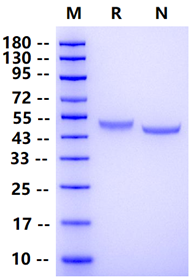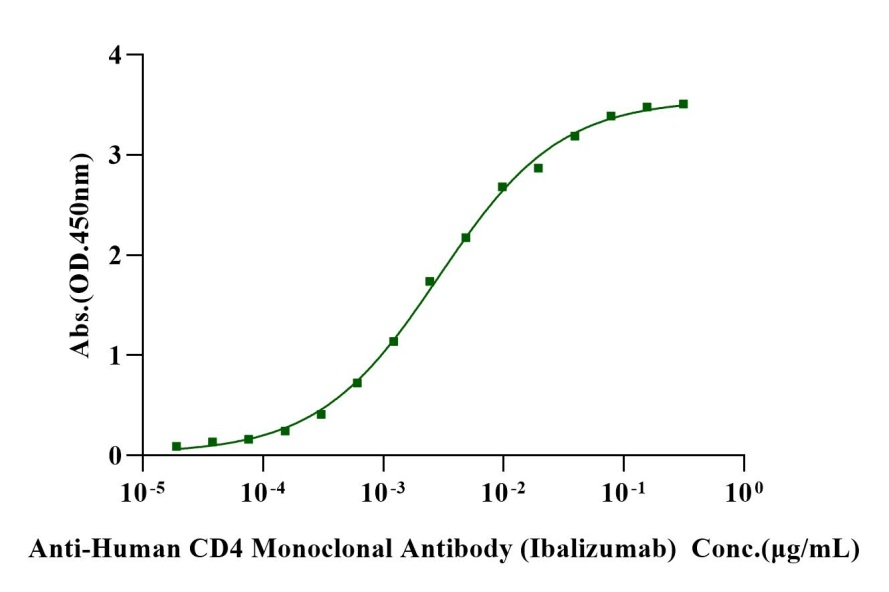Lys26-Trp390, with C-terminal His&Avi Tag KKVVLGKKGDTVELTCTASQKKSIQFHWKNSNQIKILGNQGSFLTKGPSKLNDRADSRRSLWDQGNFPLIIKNLKIEDSDTYICEVEDQKEEVQLLVFGLTANSDTHLLQGQSLTLTLESPPGSSPSVQCRSPRGKNIQGGKTLSVSQLELQDSGTWTCTVLQNQKKVEFKIDIVVLAFQKASSIVYKKEGEQVEFSFPLAFTVEKLTGSGELWWQAERASSSKSWITFDLKNKEVSVKRVTQDPKLQMGKKLPLHLTLPQALPQYAGSGNLTLALEAKTGKLHQEVNLVVMRATQLQKNLTCEVWGPTSPKLMLSLKLENKEAKVSKREKAVWVLNPEAGMWQCLLSDSGQVLLESNIKVLPTWGGGSHHHHHHHHGLNDIFEAQKIEWHE
50-55kDa
1. Peng, Ding, Huo et al J Magn Reson Imaging (2023).
T-cell surface glycoprotein CD4 is also known as T-cell surface antigen T4/Leu-3 that plays an essential role in the immune response and serves multiple functions in responses against both external and internal offenses. In T-cells, functions primarily as a coreceptor for MHC class II molecule: peptide complex. The antigens presented by class II peptides are derived from extracellular proteins while class I peptides are derived from cytosolic proteins. Interacts simultaneously with the T-cell receptor (TCR) and the MHC class II presented by antigen presenting cells (APCs).CD4 is accessory protein for MHC class-II antigen/T-cell receptor interaction. CD4 induces the aggregation of lipid rafts. CD4 is a primary receptor used by HIV-1 to gain entry into host T cells. HIV infection leads to a progressive reduction of the number of T cells possessing CD4 receptors.

1μg (R: reducing conditions, N: non-reducing conditions).

Immobilized Biotinylated CD4/LEU3 His&Avi Tag, Human (Cat. No. UA010670) at 2 μg/mL on Streptavidin precoated (0.5μg/well) plate, can bind Anti-Human CD4 Monoclonal Antibody (Ibalizumab) with EC50 of 2.57-3.33ng/ml.